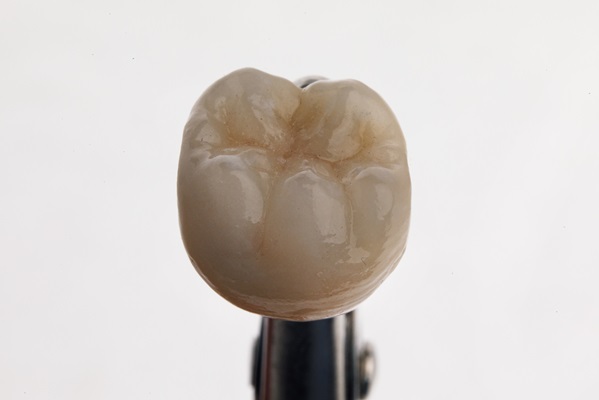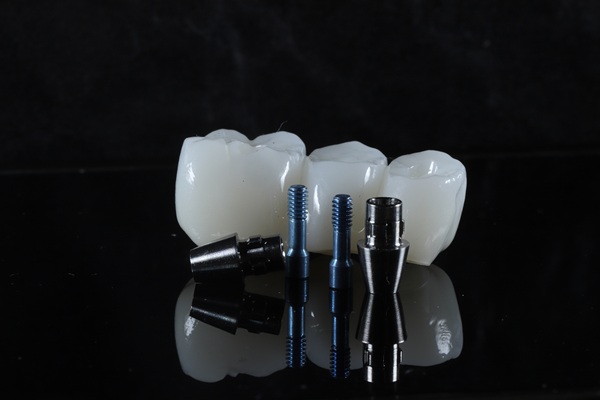Is There a Recovery Period After Getting Dental Crowns?

Patients considering dental crowns may have concerns regarding the recovery period following the procedure. Fortunately, the typical recovery period is relatively quick and involves minor inconvenience. Most risks and complications resulting from the procedure are comparable to those of most dental procedures and therefore require similar precautions.
The crown replacement process
The placement of dental crowns involves two stages, each requiring its own visit. During the first visit, the dentist will examine the roots and surrounding bone tissue of the tooth receiving the crown. After ensuring the abutment tooth is healthy, the dental professional will numb and reshape it to accommodate the crown. The dentist will then make an impression of the tooth using putty, paste, or a digital scanner and send that impression to a dental lab. Because the lab needs two to three weeks to create a permanent crown based on the impression, the dentist will place a temporary crown to cover the prepared tooth in the meantime.
The temporary crown
While wearing any temporarily placed dental crowns, patients have to take extra precautions not to break or accidentally remove them by doing the following:
- Chewing foods on the opposite side of the mouth from the crown
- Avoiding chewy or sticky foods
- Flossing gently around the treated area
- Not biting down on hard foods
While this period may be inconvenient, it is typically the hardest part of the treatment. After the permanent crown is placed, the recovery period usually takes a few days provided there are no complications.
The permanent crown
As with many dental procedures, it is recommended for patients to avoid hard foods or hot drinks until all sensation returns to avoid accidentally biting or burning their tongue. They must also avoid sticky food for 24 hours while the crown cements to the abutment tooth. During the first few days, patients may experience post-procedure inflammation or irritation that leads to increased sensitivity or pain. Usually any pain or sensitivity can be alleviated with topical analgesics, ibuprofen, or sensitivity-reducing toothpaste.
Possible complications
While most patients can resume normal eating habits a few days after treatment, certain complications can prolong the recovery period. For example, the crown may chip if it is made of porcelain. While the dentist can quickly fix chips with a composite resin in most cases, the crown may need replacement if excessive chipping occurs.
It is also possible for the crown to loosen if the cement washes out from underneath it. If this happens, bacteria can seep in and cause tooth decay to the underlying tooth, eventually causing the crown to fall off. Should any of the aforementioned problems occur, patients should contact their dentist immediately to make an appointment and to receive instructions on how to manage until treatment.
Conclusion
If you have healthy teeth and follow post-procedure recommendations after receiving dental crowns, the recovery period typically should not last long. The increased self-confidence and convenience you can gain with the treatment should last much longer.
Are you considering dental crowns in the Santa Ana area? Get more information at https://www.mysmilefamilydental.net.
Check out what others are saying about our dental services on Yelp: Dental Crowns and Dental Bridges in Santa Ana, CA.
Recent Posts
When there are issues with the teeth, a dentist performs a variety of procedures to treat them, and one is the placement of dental crown. A crown is a cap that looks like a tooth, and it covers an existing tooth to restore function. A crown protects a tooth and prevents further issues from occurring. A…
Dental bridges are one of the top solutions to get back your smile after losing one or multiple teeth. Patients everywhere need tooth replacement due to a variety of reasons. Seeing your dentist regularly is the most effective way to prevent the loss of teeth. Your oral hygiene should be a number one priority in your…
You may have heard of dental bridges as a type of restorative treatment at the dentist’s office. It is one of the various options the dentist can explore to restore smiles and the full function of the mouth. As you consider this treatment along with other possible solutions, it is helpful to understand how bridges…
For patients missing multiple teeth, All-on-4® dentures are an excellent restorative option. These implant-supported dentures can transform a patient's smile. Many patients prefer this type of denture, as it is more secure and natural-looking than a regular denture.Before committing to this procedure, patients need to understand the process. The dentist should explain the benefits of…


